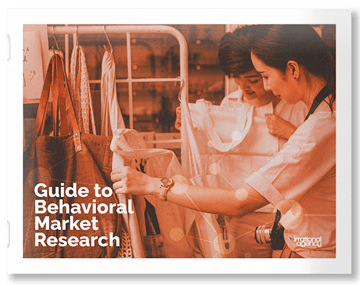
System 3 Flexibility: How Consumer Narratives Address Multiple Business Challenges
 Irrational Agency
Irrational Agency
If you’re a consumer insights researcher working at a major brand, here are some questions you might ask yourself:
- How many people know about my brand? (And what do they know about it?)
- Do people regard my brand in a positive way? (And how positive?)
- Will they consider my products when they are buying in my category?
- Are our ad campaigns landing? Are they being noticed, and are they influencing people in the way we want them to?
- As Mark Ritson points out: Can we charge a premium for our products? (and how much?)
- Will this new concept perform in the marketplace?
- How could we improve on all of the above?
All of these questions are important for understanding your brand’s performance, and influence market share and profitability. Naturally, you and your marketing stakeholders want to know the answers to them: which is why they are often part of a brand tracker, measured several times a year.
But most trackers only give headline figures. They are not good at exploring why things are changing, or telling you what to do about it. How many times have we seen a brand’s performance stalling – declining in consideration, resorting to expensive promotions in order to maintain share – and the marketing team struggling to know how to turn it around?
What if your tracker could tell you not just how well you’re doing, but how you can do better? If it could show you the gaps between what customers want, and what you’re offering? If it could generate new ideas for ad campaigns, products, and brand positioning? Quite the innovative research tool.
Imagine a new consumer behavior model that maps out the buyer’s decision process and explores their unconscious views of your brands and your category. It could show you whether you’re providing what they want. And if not, it would show you where you need to do more. And it could be updated every time your brand tracker report comes in.
How could you do that? Maybe it calls for neuromarketing, and scanning your customers’ brains? Or maybe you need to scan millions of behavioral data points with an AI system? You’ll be relieved to find out that the answer is much simpler.
To figure out what it might look like, consider one of the big movements of recent years: brand storytelling. One famous example is Donald Miller's’ Storybrand. Then there’s Susan Payton'sThe Business of Stories, any number of storytelling workshops, or keynotes in dozens of marketing conferences. Brands are exhorted to tell stories, because this is the way to inspire people, connect to their emotions, and be memorable.
That’s good advice, by the way. But the story you want to tell is one thing. The story your customers tell about you could be quite another.
It’s true that customers respond to brand stories. More importantly, however, they tell their own stories. Every time a person makes a decision, they imagine its outcome – in the form of a narrative. Their decision has a goal; there may be obstacles in the way, or simply a gap between where they are now and where they want to be. They use brands or products as a tool or solution to close that gap.
For your brand story to work, it must be consistent with the story your customers tell themselves. The problem they want to overcome should be the same as the one you solve in your story. The character traits they see in themselves should be the ones you give to your story’s hero. And the way you position and describe your product should match their perceptions of the tool they think will solve their problem.
If you listen to enough stories from your customers, you will hear what they really want. Listening to stories at mass scale is called narrative research and it is growing in importance in our industry.
One powerful tool to do that is Irrational Agency’s System 3. It presents a buying scenario – a point of decision – and asks customers to tell their own stories. Over 1,000 respondents connect their goal with the challenges they face, the solutions they use to overcome them, and the attributes they associate with those solutions.
Then they do the same for your brand. What problems does it solve, what attributes does it have, and does it achieve their goal?
The result: your true brand narrative. Not the one your creative team designed, or the one you want to promote – but the narrative in your customers’ heads. The customer’s brand narrative is the one that matters.
And the customer’s brand narrative can answer all the questions we started out with.
- How many people know about my brand? All the ones who have a narrative about it.
- What do they know? They know whatever their narrative says.
- Do they regard it in a positive way? Let’s see if the narrative has a happy ending.
- Will they consider my products? If their brand narrative matches their category narrative – sure.
- Are our ad campaigns landing? Measure the narrative of the ads, and see if it matches the brand narrative the customers perceive.
- Can we charge a premium? The more rewarding the narrative is, the stronger your pricing power.
- Will this new concept perform? Does the narrative of the concept match the narrative of the category, and fit the narrative of your brand?
- And how do we improve? Bring your narrative, the category narrative and the customer’s brand narrative together: the closer they are, the better you will perform on all of the above.
System 3 can measure brand awareness, brand consideration, and brand attributes – but most importantly, it reveals your true brand narrative. Telling the right story is one key to brand success: but hearing your customers’ stories is the essential step in getting there.
New to Behavioral Market Research?
Curious how your brand can use behavioral science for better brand impact?
Let us help you get the lay of the land with this helpful guide:


